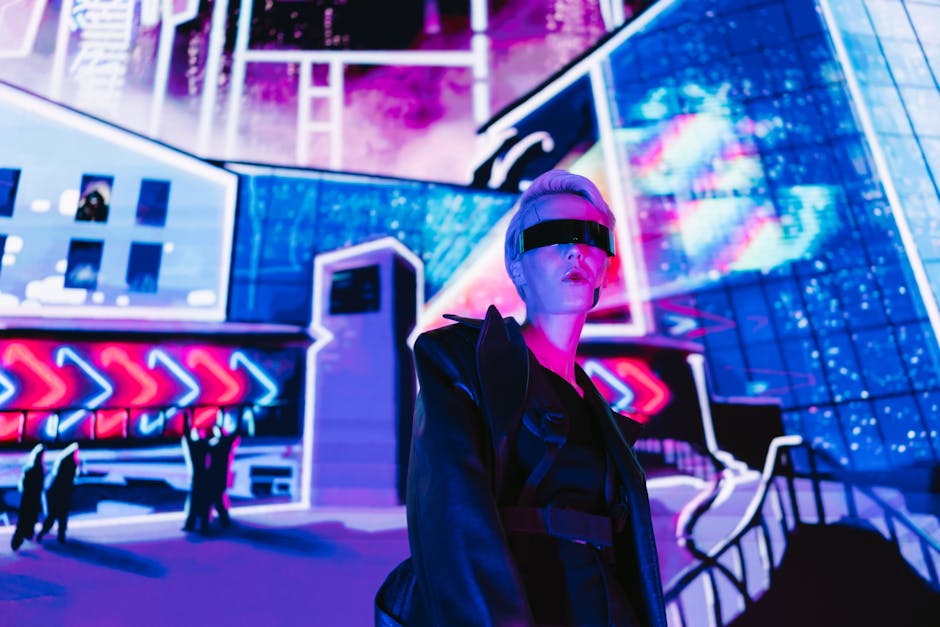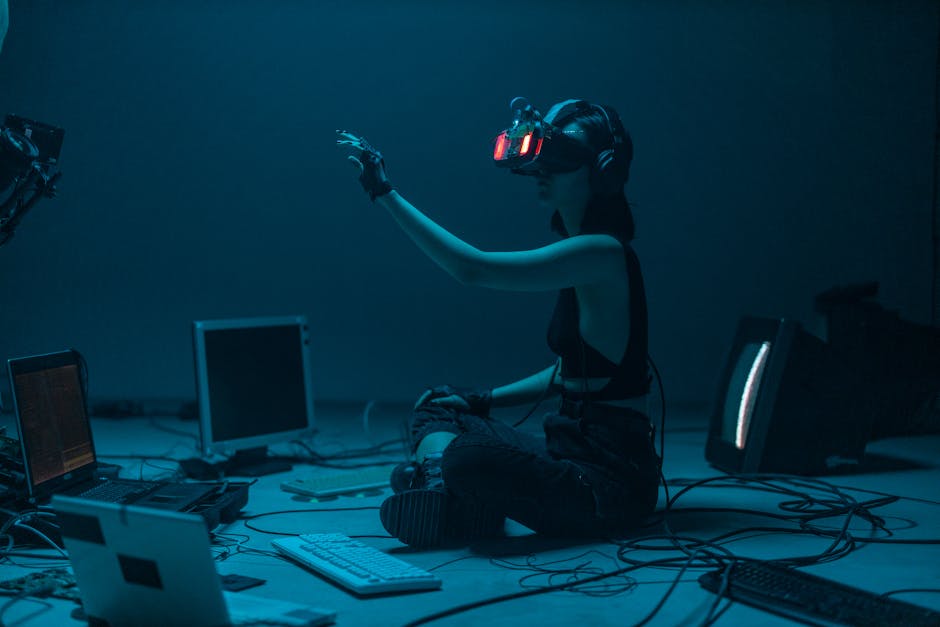How Gaming Shapes Urban Design & Architecture in the Metaverse
As cities evolve in a digital-first world, gaming isn't just entertainment; it's a catalyst shaping urban development and architectural trends in the Metaverse. With millions of players experiencing virtual realities, gaming culture is seeping into real-world design. This article will delve into the transformative effects of gaming on urban spaces, the rise of virtual architecture, and how they might redefine our real-life environments.
The Intersection of Gaming and Real-World Urban Development

Urban development has historically been influenced by various socio-economic factors, but the advent of gaming has introduced a novel perspective. Game designers and urban planners are increasingly collaborating to harness the creativity of gaming visuals and narratives to re-imagine our physical environments. The Metaverse has given rise to an entirely new design language—a blend of fantasy and functionality—that inspires innovations in architecture.
For example, gaming environments often defy physical laws, painting a canvas where creativity feels limitless. This has led architects to experiment more boldly and incorporate multi-sensory experiences into their designs. In fact, the importance of ambiance and soundscapes in games can no longer be overlooked. As detailed in our sound design article, audio not only enhances gameplay but also influences player behavior and emotions, a concept that can be applied when designing real-world spaces to foster better community engagement.
Lessons from Virtual Worlds: The New Language of Design

One of the most profound influences gaming has had on urban architecture is the emergence of "gamified" city planning. Cities designed with the gamer's mindset encourage interaction and exploration, much like the levels and missions in popular video games. Urban planners can leverage concepts such as rewards systems and engaging narratives to encourage community involvement, much like game mechanics that drive players to complete quests.
Take a city like Singapore, for example. The city has been using augmented reality and gamified elements to enhance pedestrian experiences. For instance, there are interactive kiosks that help residents navigate urban spaces by engaging them with local history and promoting cultural experiences. By making city development feel more like a game, planners are fostering a sense of ownership and connection among citizens.
A closer look at the role of open-world games reveals how they not only entertain but also fuel activism by engaging players in virtual quests that echo real-world challenges, thereby translating digital experiences into physical action. Gamers often become advocates for societal change, influencing policies and civic engagement, which invariably shapes urban architecture to be more inclusive and sustainable.
Virtual Reality and Its Architectural Implications

As we enter 2025, the rise of virtual reality (VR) has expanded the horizons of what's possible in both gaming and urban design. VR allows architects and urban planners to create immersive environments that can be explored before their physical construction. This is particularly useful when it comes to civic projects because it allows for community feedback even before the concrete is laid.
Imagine walking through a fully rendered 3D model of a new public park while still sitting at your computer. Residents can wear VR headsets and visualize the space, providing invaluable insights that can influence design. Furthermore, this technology can eliminate geographical boundaries, allowing expertise from around the globe to inform local projects in ways never before possible.
As discussed in recent explorations of non-linear gameplay, the principles of player agency can be directly applied in architectural designs, creating spaces that encourage spontaneous exploration similar to that found in gaming environments.
The Urban Fabric of the Metaverse

Beyond the physical spaces we inhabit, the Metaverse itself is evolving as a layer of urbanity layered onto our reality. The architectural decisions made within this digital space influence not just how we engage with it, but also the possibilities for real-world design. Imagine meeting your friends in a digital park with distinct cultural landmarks that reflect the geography of your own city but elevated with fantastical elements—a manifestation of an architect's imagination.
These virtual spaces often promote inclusivity, allowing for the creation of environments where traditional boundaries—be it social, economic, or even cultural—lose significance. This notion of inclusivity is particularly crucial as we look into the future of cities, especially when considering how urban design can reflect and adapt to the needs of diverse populations.
Community Engagement Through Gaming Elements

Gamification is not merely about adding points and badges; it’s about community-building. Cities are beginning to rise to the challenge of engaging their residents through interactive experiences. As outlined in our exploration of gaming communities, the collective memory of players shapes how they perceive their worlds. Integrating elements of play into urban spaces—like challenges that reward active participation—can lead to a more invested public.
Real-world examples include urban scavenger hunts facilitated through smartphone apps or participation in augmented reality challenges that replace typical urban exploration with a deeper narrative. This approach not only entertains but informs and engages citizens in the processes that shape their environments.
Sustainability and Eco-Gaming in Urban Planning

With growing concerns over climate change, the gaming industry is also leading initiatives toward sustainability. Eco-gaming refers to games designed to raise environmental awareness and inspire sustainable practices among players. Achievements in these virtual landscapes can create real-world impacts—like planting trees or reducing waste—through gameplay that translates into actions reflective of environmental stewardship.
Urban planners are increasingly inspired by the principles of eco-gaming, presenting green technology and sustainable materials as integral components in architectural design. Residences and buildings that mirror the resource management found in games encourage efficiency and sustainability, offering citizens a vision of a greener future.
An excellent resource on how virtual environments inspire real-world change is the article exploring eco-gaming. If cities can amplify this intersection between gaming culture and sustainability, they can create communal spaces that prioritize environmental responsibility.
Designing for Mental Health and Well-Being

With the increasing amount of time individuals spend in gaming environments, there is rising awareness of how these experiences can facilitate mental health and well-being. Game narratives and mechanics can be designed to promote mindfulness and inclusive mental health practices, supporting users during difficult times or connecting them with supportive communities.
This influence extends into real-world urban design. Public spaces designed using principles derived from gaming are more than just places to pass through; they can facilitate interactions that promote emotional resilience. Gardens, parks, and community hubs, thoughtfully integrated with murals and engaging constructions inspired by popular games, can foster a sense of community and belonging.
Furthermore, incorporating elements such as quiet zones for reflection or playful installations that encourage interaction can make urban areas psychologically attuned to mental health needs. If we reference our article on gamification in mental health, it's clear that engaging experiences—both virtual and real—can create fulfilling environments conducive to well-being.
Future-Proofing Urban Spaces with Technology

As urban environments evolve, futurism in architecture—facilitated by technology and gaming—is becoming increasingly important. Designing for adaptability not only considers immediate needs but anticipates future changes in cultural, technological, and environmental contexts.
Architects can learn from the evolving nature of gaming design, where changes can occur dynamically in response to player choices or external factors. Therefore, urban spaces should integrate flexible materials and designs that allow cities to adapt quickly, much like how urban gameplay adapts to players’ actions and preferences.
Consider augmented reality applications where citizens can visualize potential developments in real time, making them active participants in their urban environments. This convergence of real-world planning and digital interaction provides a powerful new tool for urban engagement and growth.
The Role of AI in Shaping Future Urban Dynamics

Artificial intelligence (AI) is rapidly reshaping the gaming landscape, and its influence is spilling over into urban design. Smart cities leverage AI to manage resources, monitor traffic, and enhance urban living by creating efficient environments that can quickly adapt to the needs of their inhabitants.
The intelligent use of AI can enable data-informed decision-making, predicting trends and patterns that influence how cities evolve. As explored in our piece on AI in gaming, systems can reshape not just virtual environments, but integrate with urban designs to create responsive spaces that foster community living while focusing on wellness and sustainability.
Final Thoughts
Gaming is more than just entertainment; it’s a dynamic force that influences urban development, architectural trends, and societal behavior. From fostering community through gamification to paving the way for sustainable, adaptive cities, the lessons learned from gaming can redefine urban design for future generations. The digital landscapes we play within are teaching us to envision and construct our physical realities in more connected, meaningful, and resilient ways.
As we look toward a future that interweaves our virtual and real-world experiences, it’s evident that architects, urban planners, and gamers can indeed share a powerful vision—one that honors both our creativity and our collective humanity.


